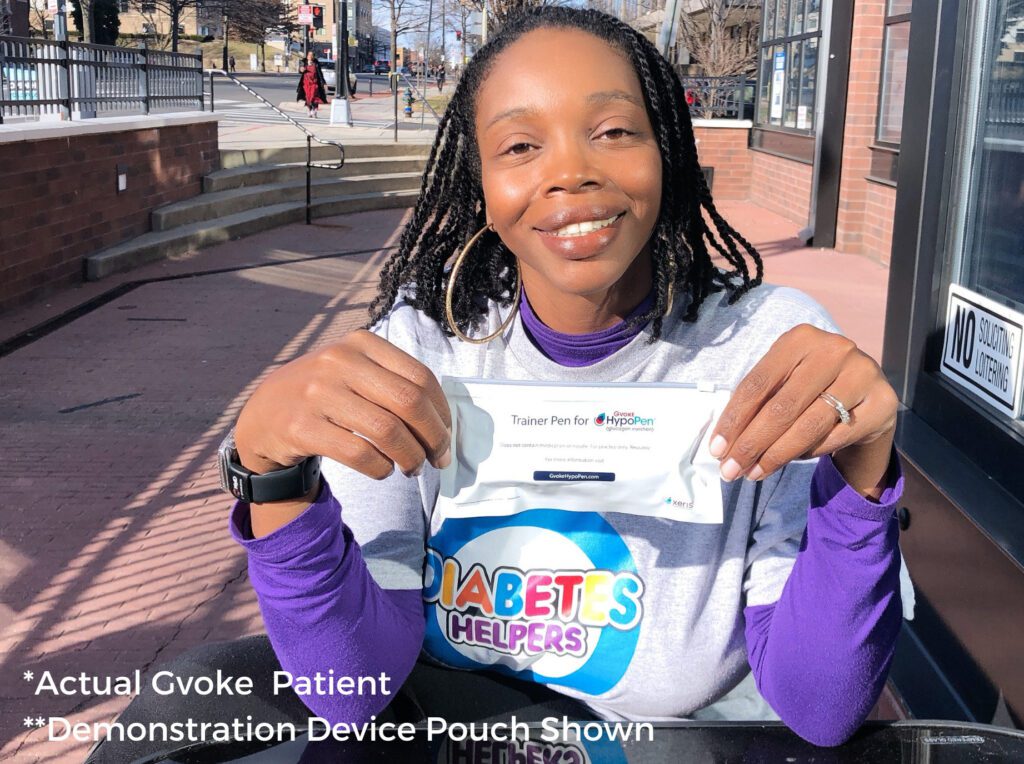I, too, can make a difference in diabetes

I didn’t know anything about diabetes before I was diagnosed. I was only aware of the stigma around the condition — it happened to “those people.” “Those people” were lazy, those people didn’t eat right, those people didn’t take care of themselves. Hearing the triage nurse in the ER tell me that I have diabetes was shocking. I thought, “how could this be?” I wasn’t lazy, I ate well, I was exercising, and I had shed nearly 50 pounds. I was devastated.

Then over the course of a week-long stay in the hospital recovering from extremely high blood sugar levels, I was given pamphlets about diabetes. I learned that the adverse health outcomes of diabetes disproportionately impact African Americans, and that the disease one of the leading causes of death for Black people in America. This wasn’t easy to read as a Black person newly diagnosed, so I looked to other Black people with diabetes for inspiration. When I read Patti LaBelle’s words, “I had diabetes, but diabetes wasn’t gonna have me,” I cried. I was uplifted by her words and by the stories of neo-soul artist Angie Stone and Daryl Coley, one of my favorite gospel artists. These African American legends were my inspiration for learning how to take care of myself and not allow diabetes to defeat me.
I’ve been living well with diabetes for more than a decade and I’ve had the pleasure to witness other phenomenal African Americans live their diabetes journeys out loud, such as Hollywood actor Anthony Anderson, TV talk show host Sherri Shepherd, lyrical genius Chaka Khan, and playwright Robbi McCauley. Robbie McCauley’s play, SUGAR, the first one-woman production about diabetes written and performed by an African American, was a major inspiration to me.
While there have been significant strides in care for African Americans living with diabetes, much room for improvement remains. One area I’d like to focus on in this blog is always carrying emergency glucagon. According to dQ&A, a leading diabetes market research company, African Americans are significantly less likely to carry glucagon than their white counterparts. It’s important to always have glucagon on hand if you are on insulin or if you take a sulfonylurea. Severe low blood sugar can strike at any moment, so we always need to stay prepared in case of an emergency.
Here is another way I’m doing better at managing my diabetes: checking those glucagon expiration dates. If you’re like I was years ago, you might have had the same glucagon kit for years, not knowing if it was expired or not. Just like with other medications, it is dangerous to use expired glucagon. Now, I take care of myself by making sure I see my doctor annually and always having my prescription for glucagon filled. My glucagon of choice is Gvoke HypoPen®. It’s a simple-to-administer glucagon rescue pen that is convenient to carry and has 24-month room temperature stability. Part of staying safe is also knowing that you or your loved ones will be able to administer glucagon if you need it, which is why I carry a premixed and ready-to-use treatment for severe hypoglycemia. Always keeping Gvoke HypoPen® with me and telling others about it are small ways that I’m working toward bettering health outcomes for myself and other African Americans who are living with diabetes.
Let’s all do better and have more of these important conversations with our friends and family so that we can all have peace of mind about severe low blood sugar. Join me in changing the statistics from African Americans being “less likely” to carry glucagon to being “as likely” to carry emergency glucagon by asking our doctors for a prescription and refilling it on time. Ask your doctor if Gvoke HypoPen® is right for you!
Source: dQ&A, The Diabetes Research Company, Ownership of Emergency Glucagon Kits, Survey. Q3, 2022.
Indication
GVOKE (glucagon) is a prescription medicine used to treat very low blood sugar in adults and children ages 2 years and above with diabetes.
Important Safety Information
- Do not use GVOKE if you:
-
- Have a tumor in the gland on top of your kidneys, called a pheochromocytoma because of the risk of a substantial increase in blood pressure
- Have a tumor in your pancreas called an insulinoma because of the risk of low blood sugar
- Are allergic to glucagon or any inactive ingredient in GVOKE. Stop using GVOKE and seek immediate medical attention if you experience any symptoms of a serious allergic reaction such as rash, difficulty breathing, or low blood pressure
- Before using GVOKE, tell your doctor about all the medicines you take and your medical conditions, including if you have not had food or water for a long time (prolonged fasting or starvation), have low blood sugar that does not go away (chronic hypoglycemia), or have a history of a skin rash called necrolytic migratory erythema (commonly associated with glucagon-producing tumors)
- The most common side effects reported in adults are nausea, vomiting, swelling at the injection site, and headache
- The most common side effects reported in children are nausea, low blood sugar, vomiting, headache, abdominal pain, high blood sugar, pain or redness at injection site, and hives
- Inform caregivers on the Instructions for Use of GVOKE, and symptoms of severe hypoglycemia, which include unconsciousness and seizures or convulsions
- Store in original container until time of use, and at room temperature between 68°F to 77°F (20° C to 25° C)
- You are encouraged to report side effects of prescription drugs to the FDA. Visit http://www.fda.gov/medwatch or call 1-800-FDA-1088
Please talk to your doctor and see full Prescribing Information and Patient Information Guide for GVOKE.